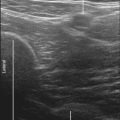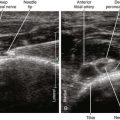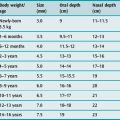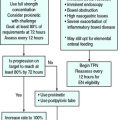Healthcare providers must deliver high-quality care while adapting to the growing demand for virtual health services. Leveraging EHR systems with telehealth platforms enhances patient outcomes, streamlines workflows, and provides personalized care to patients, regardless of location.

Your daily operations involve managing patient information, ensuring data security, and keeping up with regulations, all while delivering excellent care. Integrating EHR and telehealth helps you access and share patient data securely and efficiently.
In this article, let us explore how integrating EHR with telemedicine can improve your practice, enhance patient care, and meet the rising demand for virtual health services.
Integration of EHR Systems with Telehealth Platforms
Seamlessly integrating EHR systems with telehealth platforms is essential for delivering efficient and effective remote patient care. EHR software ensures patient data are accessible, secure, and up-to-date, enabling optimal care. Although there are technical, compatibility, and privacy compliance issues, robust IT support, staff training, and interoperable solutions can overcome these obstacles, creating a cohesive, streamlined system for improved patient outcomes.
Seamless Integration for Enhanced Patient Care
To deliver optimal care through telemedicine, ensure seamless and secure integration between your EHR system and telehealth platforms. This integration allows the smooth flow of patient data, enabling access to comprehensive medical histories, test results, and treatment plans during virtual consultations. Successful EHR-telehealth integration involves key components such as:
- Interoperability standards such as HL7 and FHIR
- Secure data exchange protocols
- User-friendly interfaces for both healthcare providers and patients
Technical Challenges and Solutions
Integrating EHR systems with telehealth platforms may present technical challenges such as data compatibility issues, network connectivity problems, and cybersecurity concerns.
However, there are proven solutions and best practices to overcome these hurdles:
- Implement robust data mapping and conversion processes
- Utilizing secure cloud-based infrastructure for reliable connectivity
- Regularly updating software and implementing strong cybersecurity measures
Enhancing Patient Outcomes through EHR Integration
EHR integration plays a vital role in enhancing patient outcomes by enabling personalized care delivery and data-driven decision making. Leveraging the wealth of information stored in EHR systems enables you to provide targeted treatments, monitor patient progress, and make informed clinical decisions that lead to better health outcomes.
Personalized Care Delivery
By leveraging the comprehensive medical histories stored in EHR systems, you can deliver personalized care to your patients through telemedicine. Access to detailed patient information allows you to tailor treatment plans, consider pre-existing conditions, and provide targeted recommendations. This personalized approach improves patient outcomes and satisfaction rates.
Data-Driven Decision Making
Integrating EHR with telehealth platforms enables you to harness the power of data analytics for informed clinical decision-making. By analyzing patient data trends, you can identify potential health risks, monitor treatment effectiveness, and make evidence-based decisions. Real-world applications of data-driven decision-making include:
- Early detection and intervention for chronic conditions
- Optimization of medication management
- Identification of high-risk patients for proactive care
Remote Patient Monitoring (RPM) and EHR
Remote Patient Monitoring (RPM) has emerged as a game-changer in the healthcare industry, enabling continuous monitoring of patients’ health status outside of traditional clinical settings. Integrating RPM with EHR systems leverages technology to provide proactive care, improve patient outcomes, and reduce healthcare costs.
EHR as a Backbone for RPM
EHR systems serve as the backbone for RPM technologies. By integrating RPM devices, such as wearable sensors and home monitoring equipment, with your EHR, you can continuously track patients’ vital signs, symptoms, and treatment adherence. This integration enables proactive monitoring of patients’ health status and timely interventions, reducing the risk of complications and hospital readmissions.
Benefits of RPM-EHR Integration
Integrating RPM with EHR offers numerous benefits for both patients and healthcare providers:
- Improved chronic disease management through real-time monitoring
- Enhanced patient engagement and compliance with treatment plans
- Early detection of potential health issues, allowing for timely interventions
- Reduced healthcare costs by preventing unnecessary hospital visits
| Feature | Traditional Care | RPM-EHR Integration |
| Monitoring Frequency | Periodic check-ups | Continuous monitoring |
| Data Availability | Limited to office visits | Real-time access |
| Intervention Timing | Reactive | Proactive |
| Patient Engagement | Passive | Active participation |
Telemedicine for Improved Care Coordination
Telemedicine can revolutionize care coordination by enabling seamless communication and collaboration among healthcare providers. By integrating EHR systems with telehealth platforms, you can streamline the sharing of medical records, consult with specialists, and ensure that all members of a patient’s care team have access to the most up-to-date information.
Streamlined Communication and Collaboration
EHR integration facilitates streamlined communication and collaboration among healthcare providers involved in a patient’s care. Through telemedicine, securely share medical records, consult with specialists, and coordinate care plans seamlessly.
Improved care coordination ensures all healthcare providers have access to the most up-to-date patient information, leading to better treatment outcomes and reduced fragmentation of care.
Secure Sharing of Medical Records
When sharing medical records via EHR systems, it is crucial to ensure patient privacy and data security. Adhering to protocols and standards such as HIPAA and HITECH helps protect sensitive patient information while enabling secure data exchange between healthcare providers. Best practices for maintaining patient confidentiality in telehealth include:
- Implementing strong authentication and access controls
- Utilizing secure messaging and file-sharing platforms
- Regularly training staff on data privacy and security protocols
Regulatory and Compliance Considerations
As you integrate EHR systems with telemedicine and remote patient care, it is essential to navigate the complex landscape of regulatory and compliance requirements. Failing to adhere to these guidelines can result in legal and financial consequences and compromise patient trust and safety.
Adhering to Healthcare Regulations
Key regulatory requirements for EHR and telemedicine integration include:
- HIPAA (Health Insurance Portability and Accountability Act)
- HITECH (Health Information Technology for Economic and Clinical Health Act)
- State-specific telemedicine regulations
To ensure compliance, it is crucial to develop and implement comprehensive policies and procedures that address data privacy, security, and consent management. Regular staff training and audits help maintain ongoing compliance.
Ensuring Patient Data Privacy and Security
Protecting patient data privacy and security is of utmost importance when leveraging EHR for telemedicine. Best practices for maintaining patient confidentiality include:
- Implementing strong encryption and access controls
- Regularly updating software and security protocols
- Conducting risk assessments and vulnerability testing
- Providing patient education on data privacy and their rights
The integration of EHR with telemedicine and remote patient care represents a significant opportunity for healthcare providers to enhance patient outcomes, streamline workflows, and deliver personalized care. Leveraging technology allows you to overcome geographical barriers, improve care coordination, and empower patients to take an active role in their health management.
Prioritize seamless integration, data-driven decision making, and patient-centered care as you embark on this journey. Staying informed about regulatory requirements, emerging trends, and best practices helps you navigate the challenges and opportunities presented by EHR-telehealth integration.
FAQs
1. How can EHR integration improve telemedicine services?
EHR integration enhances telemedicine by providing real-time access to patient data, improving diagnosis and treatment accuracy.
2. What are the security measures for EHR and telehealth integration?
Implementing encryption, secure access controls, and regular audits ensure the protection of patient data in EHR-telehealth systems.
3. How does EHR integration streamline workflow in remote patient care?
EHR integration automates administrative tasks, reduces paperwork, and facilitates seamless information sharing, enhancing workflow efficiency.







